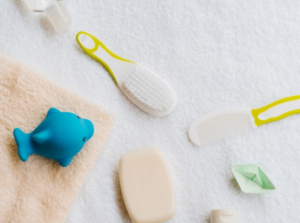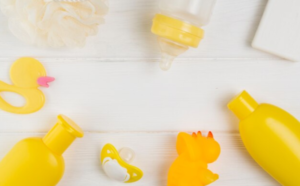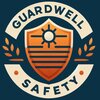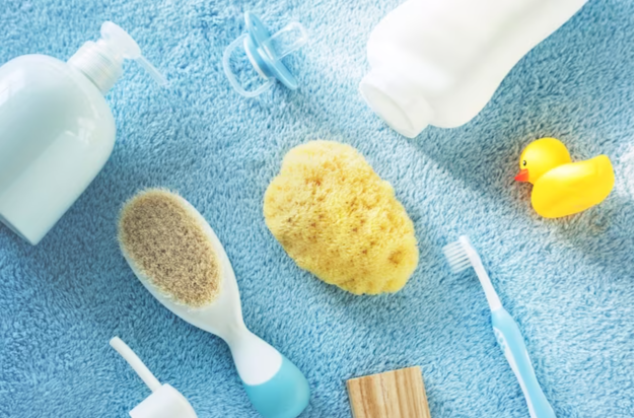Introduction
The arrival of a new family member is a momentous and jubilant occasion. Our utmost concern as guardians is guaranteeing the security and welfare of our invaluable infants. Babyproofing your residence is an essential component of child preparation. Every parent should contemplate the babyproofing essentials detailed in this article to establish a secure sanctuary for their child.
Recognizing the Criticality of Babyproofing

Before considering babyproofing, its importance must be understood. If unchecked, infants’ curiosity can lead to accidents and injury. Babyproofing identifies risks and takes precautions to prevent such accidents.
Child accidents are a leading cause of death. The CDC estimates that 2,000 children under 14 die from unintentional injuries each year, with many more suffering non-fatal injuries. By babyproofing your home, such situations are greatly reduced.
Before beginning babyproofing, a comprehensive home safety inspection must be performed. Examine each chamber within your residence to identify any potential dangers. Bear in mind that infants develop rapidly; therefore, plan for their future mobility and inquisitiveness.
Constantly vigilant for choking hazards, electrical outlets, cables, sharp corners, heavy or unsecured furniture, and electrical outlets. Additionally, take into account the spatial configuration of your residence and the potential path of your infant as they develop greater mobility.
Babyproofing Essential Products for Every Room
After conducting a risk assessment of potential dangers in your home, the subsequent step is to install the required babyproofing measures. The following items are essential for babyproofing every space in your home:
Nursery cot safety: Make sure the cot meets current safety requirements and has no sharp or protruding parts.
Anchor dressers and bookshelves to the wall for support.
Window coverings: Install cordless ones to avoid strangulation.
Outlet covers block access to electrical outlets.
Baby Monitor: Buy a reliable baby monitor to watch your baby sleep.
Edge Guards for the Living Room: Protect sharp-edged furniture like coffee tables.
Electrical Outlets: Install safety plugs or coverings.
Secure your TV and entertainment center to prevent toppling.
Choking Hazards: Remove little objects that could choke.
To prevent infants from accessing cleaning products and sharp objects, kitchen cabinet locks work well.
Install stove shields to prevent burns and scalds.
Childproof closures: Secure oven and dishwasher closures.
Check a high chair’s stability and harness before using it.
Locking bathroom toilet lids reduces drowning risk.
Keep medications, hygiene, and cleaning supplies out of reach of youngsters in childproof containers.
Bathtub anti-slip mats reduce the danger of accidents and falls.
Adjust your water heater’s temperature to avoid overheating.
Bedroom Window Guards: To prevent accidents, install window guards in bedrooms.
Replace blinds with cordless alternatives to eradicate potential strangulation hazards.
Utilize dresser anchors to fasten wardrobes and bureaus to the wall.
Small objects should be stored out of reach to prevent choking hazards.
Staircases and Hallways
Safety Gates: To restrict access, install safety gates at the top and bottom of stairs and in doorways.
Handrail Safety: Pupils and adults alike should utilize handrails that are secure and at an appropriate height.
Carpeting: To prevent slips, consider installing nonslip rugs or carpeting on the staircases.
General Advice on Babyproofing
Alongside room-specific babyproofing measures, the following are some overarching recommendations to bear in mind:
Protect Massive Objects: Prominent hazards such as televisions, bookcases, and appliances that topple over and land on a child include substantial weight. Wall anchors and brackets should be utilized to secure these items and avert catastrophes.
Safely store hazardous materials: Sharp objects, cleaning supplies, medications, and household chemicals should be stored in locked cabinets or compartments to prevent children from accessing them. It is prudent to install childproof latches or closures in these storage areas.
Discontinue Small Objects: Choke hazards consist of small objects that can squeeze inside the mouth of a baby. Demonstrate conscientiousness in collecting minute objects such as buttons, coins, and batteries from floors and other surfaces.
Be Wary of Cords and Window Blinds: Curtains and shutter cords may present a suffocation hazard. To keep cords out of reach, install cordless window coverings or use cord wraps and ties.
Carbon monoxide and smoke detector installation

It is imperative to implement operational carbon monoxide and smoke detectors in strategic locations throughout one’s residence, such as bedrooms and hallways. Replace and inspect their batteries frequently.
CPR and First Aid Training: Although babyproofing can effectively mitigate the likelihood of accidents, extreme caution must still be exercised in case of an emergency. Obtain first aid and CPR training to acquire life-saving abilities.
Babyproofing Revisions as Your Child Develops: As your infant develops further mobility, it will be necessary to revise your babyproofing protocols. Maintain vigilance regarding critical developmental milestones, such as the ability to walk and move, and adapt safety protocols accordingly. It may be necessary, for instance, to install elevated safety gates or eliminate edge barriers when they are no longer required.
In conclusion
Babyproofing your residence is an essential measure in guaranteeing your child’s security and welfare. By undertaking a comprehensive evaluation of home safety and installing the requisite babyproofing necessities, one can establish a secure and protected setting in which the infant can investigate and prosper without superfluous perils.
Bear in mind that babyproofing is a continuous endeavor that ought to progress in tandem with your child’s development and increased autonomy. Maintain a state of constant vigilance and hesitate to consult with other parents, physicians, and child safety specialists for guidance on safeguarding your infant throughout all phases of development.
While providing yourself peace of mind as a parent, you can provide your child with a secure environment in which to develop, learn, and explore by placing babyproofing as a top priority and taking the necessary precautions.
We hope you found this information helpful in your journey to create a safer environment for your family. At GuardWell Safety, we understand that every home is unique, and so are your child-proofing needs. That’s why we offer a Free Child-Proofing Consultation tailored to your specific requirements. Let our experts help you identify potential hazards and provide personalized solutions to make your home a secure haven for your little ones. Book your free consultation today and take the first step towards peace of mind.






